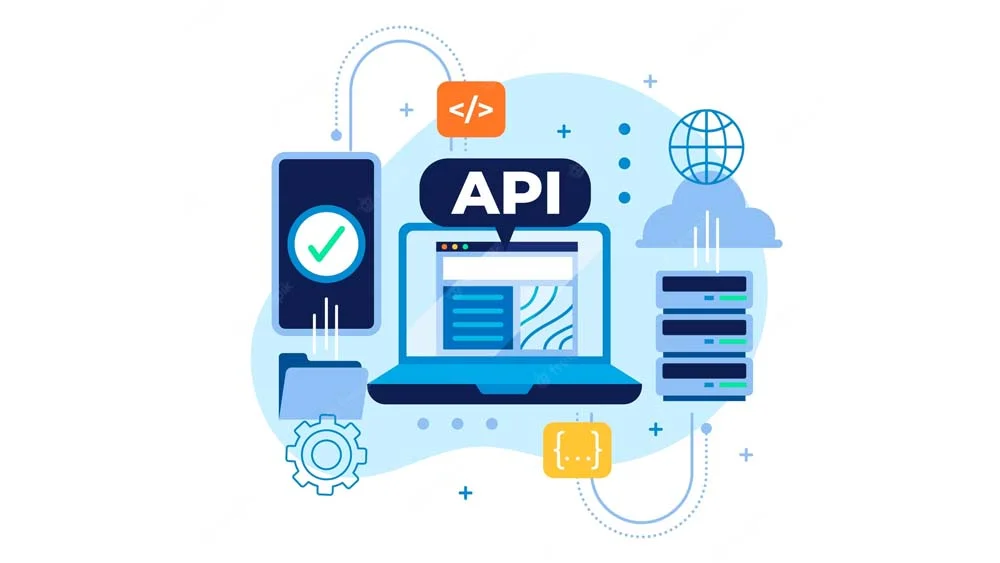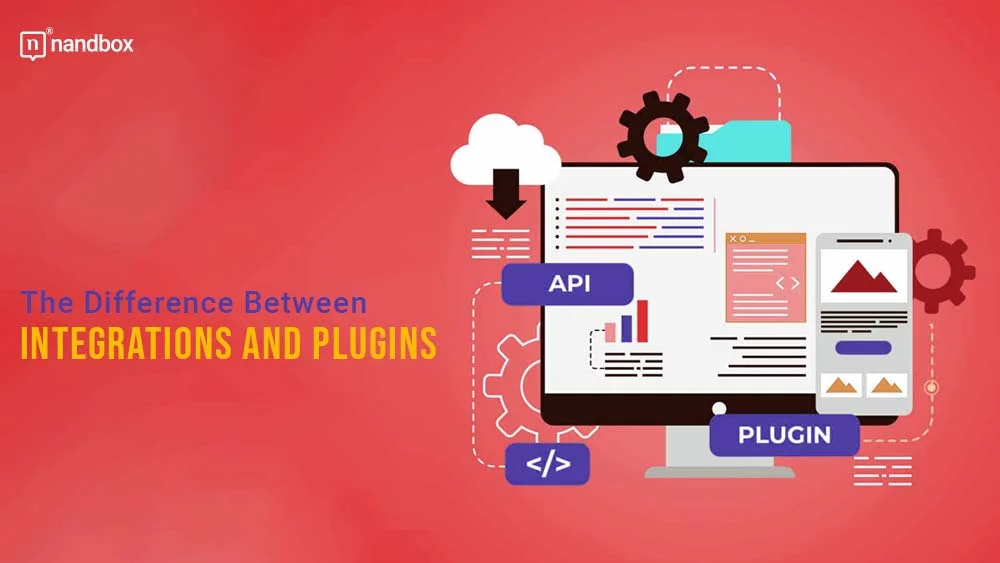Mixed-up words are sometimes an obstacle that we try to overcome in order to have a better understanding of things in general. That is the case here between these two words: “integrations” and “plugins.” In this article, we’ll be explaining the difference between these two key principles. In addition to how important they are in the process of app building. Let us first break them both down, explain each one separately, and then compare them.
Integrations: A Quick Overview

It’s all about your app’s APIs. Integration is when you use the Application Programming Interface (API) to link two or more devices, apps, or pieces of software together. Integrations are used to share information, add code, make workflows better, and automate data and procedures. They enable the development of complex procedures involving multiple relationships at once. Integrations can also be compared to plugins that don’t require installation. You have more control over what data is transmitted when you use integrations, which is a benefit. Also, it’s simpler to uninstall and switch off integrations! An integration example would be to have Airtable send me an email each time a reader signs up for my newsletter.
Plugins: What Are They?
Software that may be placed into a host application to alter it is known as a “plug-in.” Consider them to be extra software. Add-ons and extensions are other names for plugins. Using a plugin to add comments to a WordPress site is a real-world example. They can be put in place on both local and distant programs. This entails adding a plugin to a website that uses WordPress hosting or a browser like Google Chrome. The effects of plugins can be very different, depending on whether they change the user interface (GUI), or give more ways to customize or add missing features. If the source code is open-source, the development of plugins may fall under the purview of both the software’s main firm and independent developers.
What Are the Differences Between Integrations and Plugins?
There is a distinct difference between integrations and plugins. In contrast to plugins, integrations can share a piece of code. On the other hand, plugins need to be installed in order to work. A plugin is therefore an extension of the host application’s software. Integrations allow at least two different solutions to talk to each other. They are a good choice for security because of two important things: When an API connects, it doesn’t immediately begin providing information; instead, it will only share the data that the developers chose to share. This indicates that not all data is accessible via APIs. That is why, when it comes to data security or general tech safety, we advise you to go with integrations rather than plugins. So, when it comes to security, integrations are safer than plugins. This is especially true when they use API keys to encrypt data.
A read-only API is another option. So, when program B uses the API, it will get information, but it won’t be able to send back changes for program A to store. Also, integrations are simpler to deactivate in the event of a security problem. Because plugins are “deeper” integrations, they are handled differently. When they install plugins, they can access more data, which could be dangerous if there is a security hole. Plugins are helpful because they provide features and save time and money, but they also give bad actors access to your system or website in unpleasant ways.
The Advantages and Disadvantages of Integrations and Plugins
We’ve broken both down in terms of comparison and definition; now let’s uncover what the advantages and disadvantages of both are in more detail.
Advantages and Disadvantages of Plugins:
Plugins have their own advantages and disadvantages. The best thing about them is that they can be easily installed and configured by end-users without any coding knowledge. For example, with a WordPress migration plugin you can streamline your website transfer without needing to know the ins and outs of what the technical side of this process involves. They’re also often available for free or at a low cost, making them an affordable option for businesses or individuals with tight budgets. However, the use of too many plugins can slow down website performance and even cause security risks if not properly maintained. Additionally, not all plugins are well-built or kept up-to-date, which means they may not work as expected or could potentially damage a website’s functionality. It’s important to always research and test plugins before installing them on your website or app.
Advantages and Disadvantages of Integrations:
Integrations, on the other hand, are a more complete solution for businesses that want to automate processes or streamline workflows. Integrations, unlike plugins, can connect different software platforms or apps and make it easy to move data between them. This can increase efficiency and productivity by eliminating manual data entry and reducing errors. Integrations are also usually well-built and updated regularly by developers, which makes them a good choice for businesses looking for long-term solutions. However, integrations usually require some technical knowledge to set up and maintain and may be more expensive compared to plugins that offer similar features. Overall, the decision to use integrations vs. plugins depends on your specific business needs and budget.
Integrations or Plugins: Which is the Best Option for Your Business Needs
When deciding between integrations and plugins for your business needs, there are some factors to consider. Like: the functionality required, budget, technical expertise, and scalability. Integrations, for example, may be harder to set up and need more technical knowledge or help. But they have a wider range of features that can be automated, saving time and effort. In contrast, plugins are easy to use but may not offer the advanced functionalities that some businesses need to operate efficiently. Before making a choice, you’ll be able to figure out which option is best for the long-term success of your business if you carefully consider your business’s needs and these factors.
nandbox’s Integrations and Plugins
Let us first explain what nandbox is. nandbox is a native no-code app builder that lets you add features with a simple drag-and-drop method. Our app builder allows you to build native applications that can function on both iOS and Android systems. You can sign up and enjoy our 14-day free trial to get to know the app builder better. Our documentation section is also there to support you through the app-building process.
It will be the best way for you to learn how to use our app builder and modules for each of the features they support. nandbox’s app builder will also show you the number of integrations and plugins or add-ons you can have in your app. This is on top of the integrations we already have with different third-party services to improve the user experience. Sign up now for our app builder and don’t miss the opportunity to bring your app idea to life within a very short period of time.







